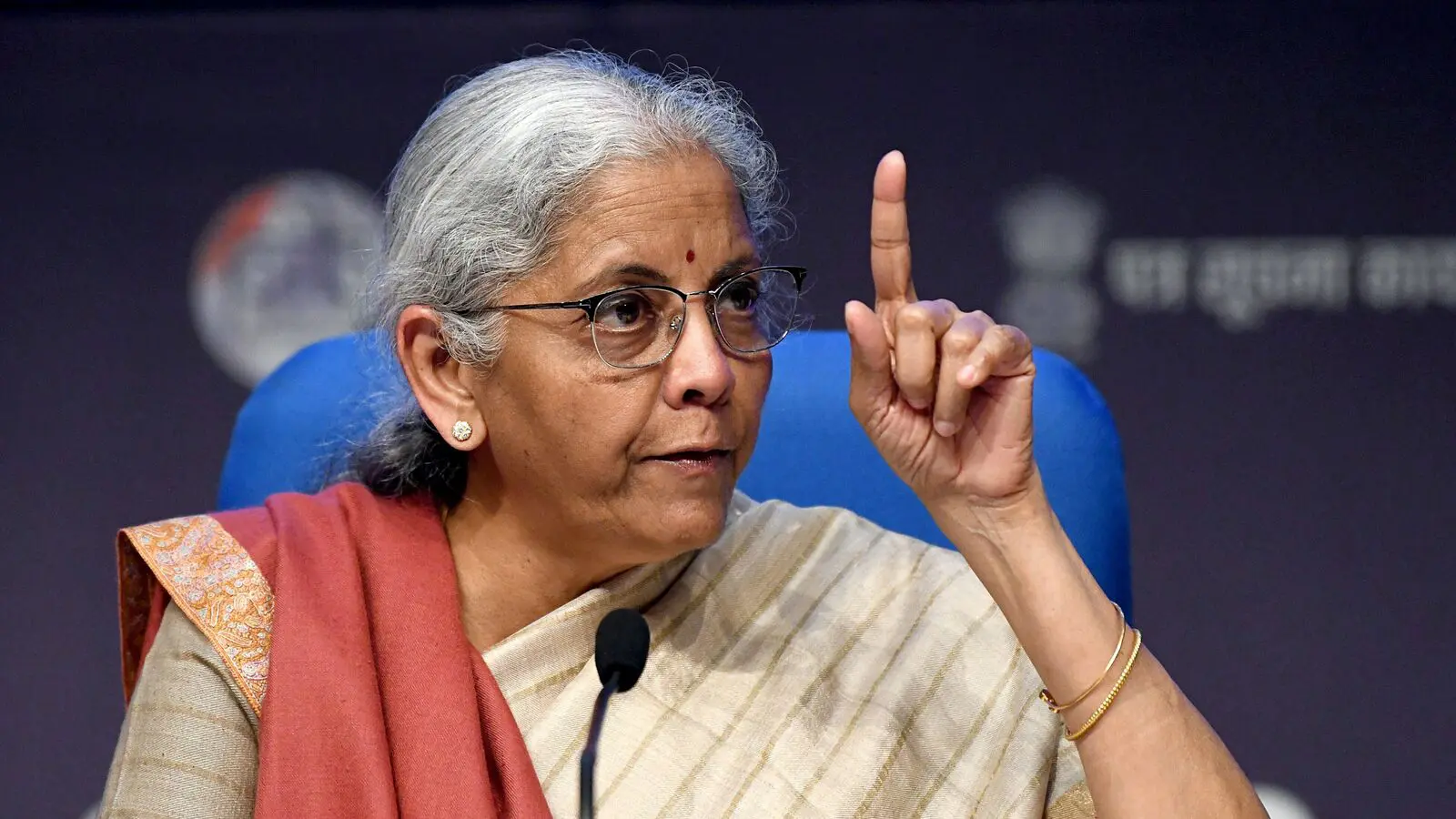New Delhi: In a bid to rejuvenate the slowing Indian economy, the Finance Minister has announced significant tax cuts aimed at boosting consumption. With urban spending declining and GDP growth dropping to 5.4% for Q2, key measures such as a ₹1 trillion income tax cut and an emphasis on infrastructure spending have been proposed to stimulate demand. The government’s focus remains on fiscal consolidation and enhancing the role of public-private partnerships as a means to revive the economic landscape.
- Revitalizing Consumption to Boost GDP
- Fiscal Commitment and Debt Management
- Focused Infrastructure Spending
- Encouraging Private Investment
- Light-Touch Regulation for Greater Efficiency
- Job Creation as a Core Focus
- Managing Debt Levels for Economic Stability
- Stock Market Reactions: A Mixed Bag
- Bankerpedia’s Insight💡
- What Does This Mean for Me?🤔
- Research References📚
Revitalizing Consumption to Boost GDP
The Finance Minister’s recent announcement aims to tackle a notable decrease in urban consumption, which significantly impacted India’s economic growth, leading to a mere 5.4% increase in GDP for the second quarter of this fiscal year compared to 8.2% during the same period last year. To counter this slump, the minister decided to cut personal income tax steeply, allowing as much as ₹1 trillion to remain in the hands of the populace. The hope is that this move will stimulate spending and drive an increase in consumption, a sector that constitutes 62% of the country’s GDP, according to the Economic Survey.
Fiscal Commitment and Debt Management
During the presentation of the 2025-26 budget, the Finance Minister reiterated the government’s pledge to reduce fiscal deficit levels, targeting 4.5% or lower by 2025-26, down from 9.2% in previous years. With the FY25 fiscal deficit recorded at 4.8%—beating the budgeted estimate of 4.9%—the government attributed this success to robust tax collection and controlled capital expenditure spending. Moving forward, the government has outlined a strategy to anchor fiscal consolidation around debt levels rather than fiscal deficits, aiming for a government debt to GDP ratio of around 50% by March 2031.
Focused Infrastructure Spending
The government’s ongoing commitment to capital expenditure (capex) remains intact but is now more strategically aligned. Over the past years, the inability to fully consume budget allocations has prompted a more cautious approach. For FY26, the government is maintaining a capex allocation of ₹11.21 trillion, and the interest-free capex loans for states stand at ₹1.5 trillion. To improve utilization in this area, public-private partnerships are being emphasized as a way to enhance project execution and absorption capacity.
Encouraging Private Investment
While the budget didn’t offer many incentives for India Inc., the anticipated boost in consumption is expected to increase demand and ultimately lead to higher capacity utilization among companies. This, coupled with a more robust banking sector that has addressed past bad debt challenges, may incentivize businesses to reconsider investments. The corporate tax cuts introduced in September 2019 already enabled a great deal of financial flexibility, creating a situation where companies might feel more encouraged to invest as economic conditions improve.
Light-Touch Regulation for Greater Efficiency
In a bid to enhance productivity and foster job creation, the government has announced plans for a light-touch regulatory framework aimed at businesses. This approach involves reviewing non-financial sector regulations and decriminalizing over 180 legal provisions through the Jan Vishwas Act 2023. The objectives are to improve the investment climate and empower states to compete with an investment-friendliness index, creating an environment conducive to business growth.
Job Creation as a Core Focus
To truly sustain growth in consumption and leverage India’s demographic dividend, job creation is paramount. Currently, 75% of non-agricultural jobs are created within the informal sector, necessitating continued government support for micro, small, and medium enterprises (MSMEs). To bolster this sector, the Finance Minister has announced a substantial increase in credit guarantee cover from ₹5 crore to ₹10 crore—a move anticipated to unlock an additional ₹1.5 trillion in credit over the next five years, fostering growth and efficiency in these vital businesses.
Managing Debt Levels for Economic Stability
Despite ambitious targets for fiscal consolidation, the challenge remains significant, especially given the government’s current debt to GDP ratio of 57.1%. Economists argue that reducing debt levels is essential for maintaining resilience in the face of potential economic crises, as evidenced by India’s relatively strong performance during the pandemic, attributed in part to lower government debt levels. As the combined debt of both the center and state is projected to hit 85.3% of GDP in FY25, the need for a robust plan remains evident.
Stock Market Reactions: A Mixed Bag
The stock market had a muted reaction following the budget announcement, experiencing initial anxiety due to higher market borrowings and disappointing capex outlays. The Sensex opened at 77,637 but settled at 77,506 points by the end of the day, showcasing gains primarily among consumer goods and automotive sectors that stand to benefit from increased consumption. Some analysts believe the subtle market response could stem from the absence of major direct incentives, highlighting the cautious optimism among investors.
As India charts its economic recovery path, the government’s recent strategies reflect a deeper understanding of the current economic challenges. The combination of significant tax cut initiatives, infrastructure investments, and regulatory reforms could very well set the stage for a revitalized Indian economy eager to overcome obstacles and thrive.
Bankerpedia’s Insight💡
The finance minister’s decision to cut personal income tax significantly is a strategic move aimed at reviving India’s faltering consumption, a critical GDP component. This could enhance disposable income, driving spending and, in turn, stimulating growth in the banking and finance sectors as increased consumer demand prompts more lending. While the government’s commitment to fiscal consolidation is commendable, businesses should be prepared to leverage the potential surge in consumption. Readers should stay informed about these developments, as they provide a glimpse into emerging investment opportunities and economic recovery paths.
What Does This Mean for Me?🤔
- Salaried Person → Higher disposable income; potential for increased spending power.
- Business Owner → Increased consumption may boost business demand, enhancing growth.
- Student → Increased disposable income may benefit student budgets.
- Self-employed → Increased disposable income may boost self-employed earnings.
- Homemaker → Increased disposable income for spending on household needs.
- Retiree / Senior Citizen → Increased disposable income may enhance seniors’ financial security.
- Job Seeker → Increased jobs and consumption boost job opportunities for seekers.
- Farmer / Rural Citizen → Increased consumer spending may boost rural market sales.
Research References📚
📲 Stay ahead in banking & finance!
Join the Bankerpedia WhatsApp Channel for instant updates, and
subscribe to our YouTube Channel for in-depth analysis and expert explainers.










